Draft review: Trail Blazers bet on Yang Hansen s All-Star Potential C-Lakes trades to win Adu B+
7:45pm, 27 June 2025Basketball
(The original article was published on June 27, and the author is Kevin Pelton from ESPN website. The content of the article does not represent the translator's views)
This year's NBA draft has all ended. When each team submits their choice, the result will be factors that they cannot control, and may even be variables that the player themselves cannot control, especially health. No team can pick enough players in a single draft to balance this uncertainty, even the Nets, who hold five first-round picks, can't do it.
Based on this premise, we evaluate from the perspective of draft pick value matching and team adaptability based on the information available to each team when the draft occurs. My scoring system is highly dependent on data-based player potential prediction models, and references to the analysis reports of ESPN draft experts Jonathan Givony and Jeremy Woo.
trading factors are also within the scope of consideration. Often, teams that trade draft picks upward often pay too much, overestimating their ability to evaluate rookies compared to other teams. Even so, the Pelicans' trade that jumped from 23rd to 13th pick this year is still particularly risky. This makes the Pelicans the lowest rated of any team, while the Hawks traded with them tied for the highest rating.
Western Conference
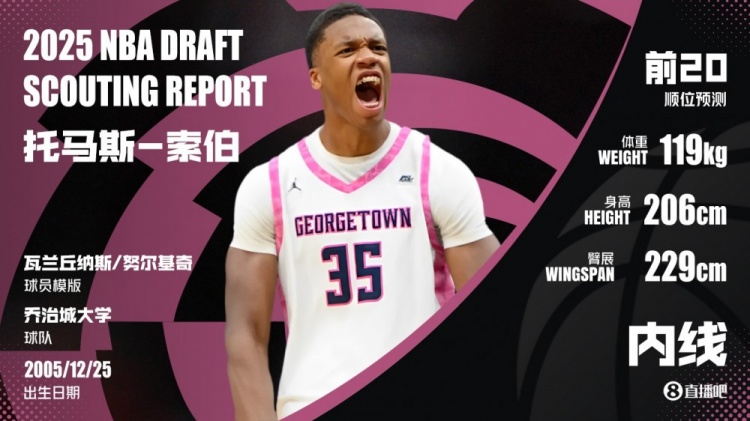
Oklahoma City Thunder: B
First round selection: Thomas Sauber (15th pick)
Second round selection: Brooks Barnheiser (44th pick)
Similar to the Timberwolves' selection of Belange, the Thunder's draft idea is very clear. Sauber showed amazing defensive statistics at Georgetown University, and his pass performance as a freshman center was outstanding (more assists than turnovers). Squints can even see the shadow of Haltenstein, and as the Thunder core lineup salary expands, he may become a victim.
Due to the lack of first-round pick lineup space, the Thunder traded the No. 24 draw to the Kings (the value of this deal lacks room for upward space, and the Thunder can only get a first-round pick with a 17th pick at most), but this is more in line with the timeline of the defending champion. According to draft expert Jonathan Givony, Barn Heize will sign a two-way contract. Although this Northwestern player is inefficient (real shooting percentage is 50%), his steals and blocks are impressive.
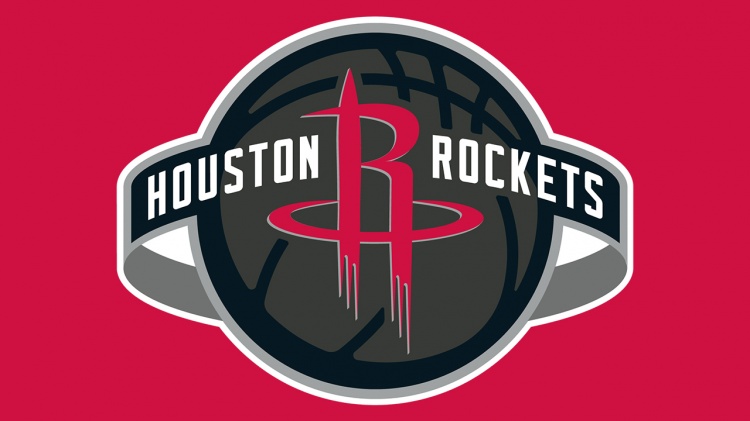
Houston Rockets: None
Rockets came to Durant with two draft picks this year, which will not be officially completed until July 6. Even with excellent past draft results, this deal has made the Rockets a winner in advance.
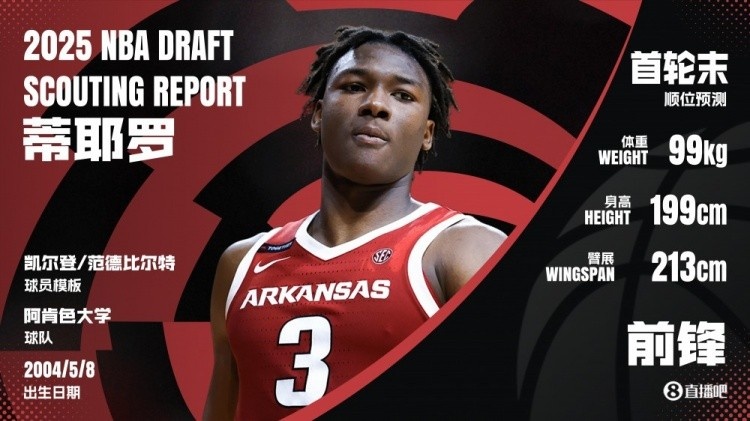
Los Angeles Lakers: B+
Second round selection: Adu Tiero (36th pick)
The Lakers used two trades and cash to upgrade the signing from 55th pick to 36th pick. Thiero's steals and blocking percentage showed defensive potential, provided he develops enough outside shooting ability (28% of three-point shooting in college) to stay on the court.
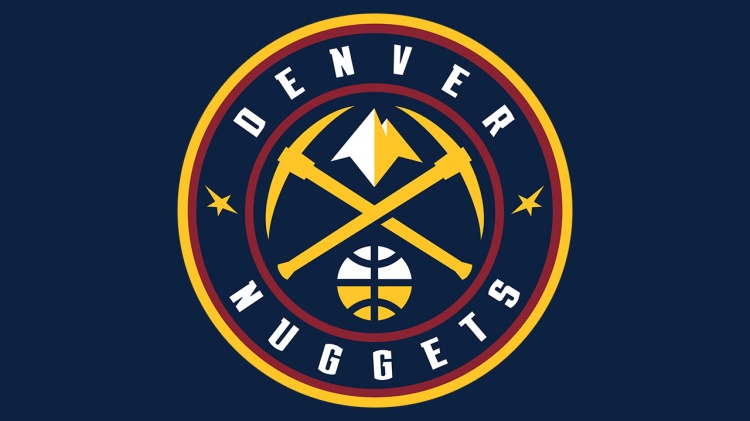
Denver Nuggets: None
fans need to get used to the Nuggets' "no" rating. Until this year's draft ends, they don't even have any future second-round picks (until now the second-round picks in 2032), and still owes other teams two protected first-round picks (as early as 2027).
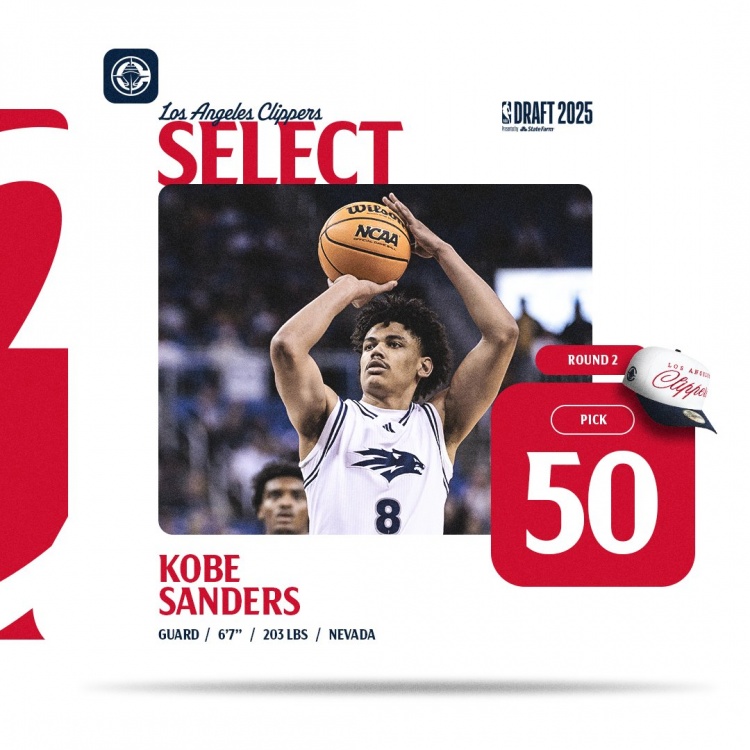
Los Angeles Clippers: C-
First round selection: Yannick Needhausen (30th pick)
Second round selection: Kobe Sanders (50th pick)
If you are the second round pick, the late-achieving Nedhausen has investment value. He is an elite blocker who has developed scoring ability after transferring to Penn State. However, it is difficult to convince with the first round pick to choose this player with a lower-average defensive rebound and a low assist-turnover ratio. His overall style of play is highly similar to Daniel O'Toulu, who was selected with the 33rd pick in 2020.
Kobe Sanders is also a late-mature player and did not average double-digit points per game until his fourth year in college. My prediction model values early-stage university performance more, because being able to make a name for early stages is usually more valuable.
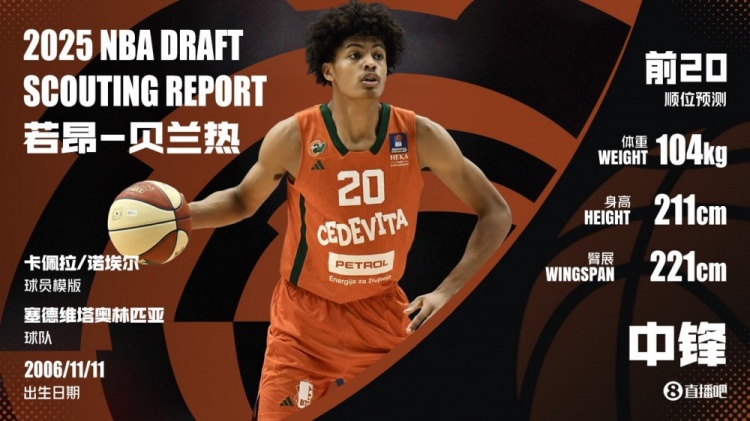
Minnesota Timberwolves: B-
First round selection: Joao Belange (17th pick)
Second round selection: Roko Zikarski (45th pick)
Timberwolves can foresee how this low-use basket-protecting center in the Slovenian League should be integrated into the system. It is unrealistic to expect Belange to become a top finisher like Gobert, who has an extra 4 inches (about 10 cm) in draft sports wingspan. But as Gobert ages, the Timberwolves need replacements, and Belange has the potential to fill the gap.
Choose Zikarsky, who is 2.17 meters tall in the second round, is another guarantee for the position. The prediction data of the two players are surprisingly similar, and it will be interesting to observe how the Timberwolves cultivate them simultaneously.
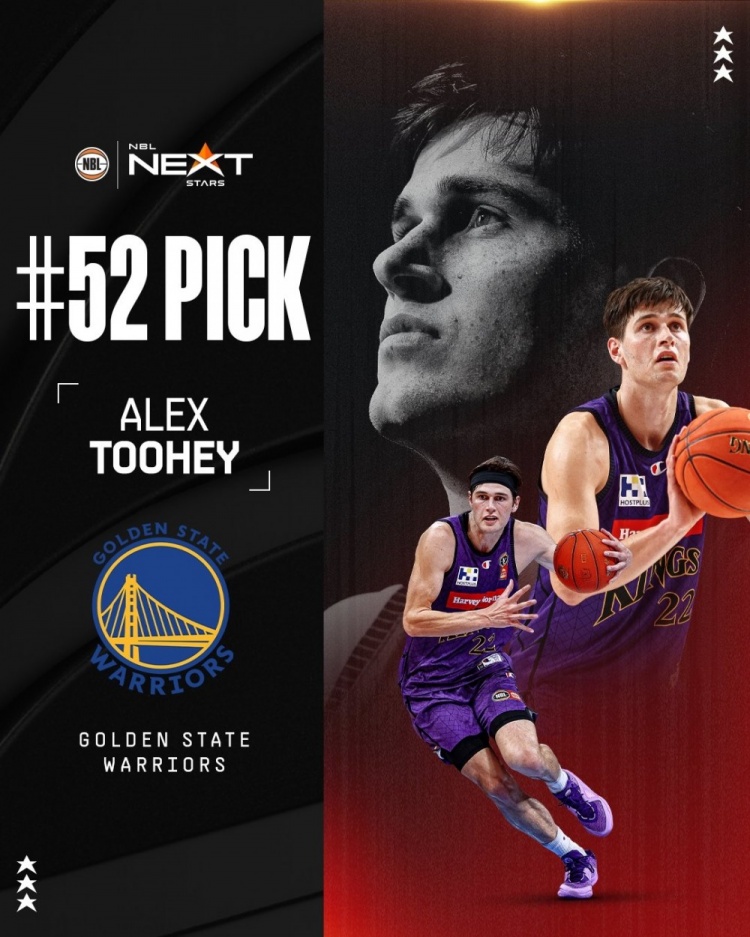
Golden State Warriors: B
Second round selection: Alex Tuxi (52nd pick), Will Richard (56th pick)
Alex Tuxi's shooting is still evolving (31% three-point shooting percentage in Australia's NBL this season), but his steals and blocking percentages show excellent defensive enthusiasm. I've always been optimistic about Will Richard, who is in the top 30 in my prediction model with his high two-point shooting percentage.
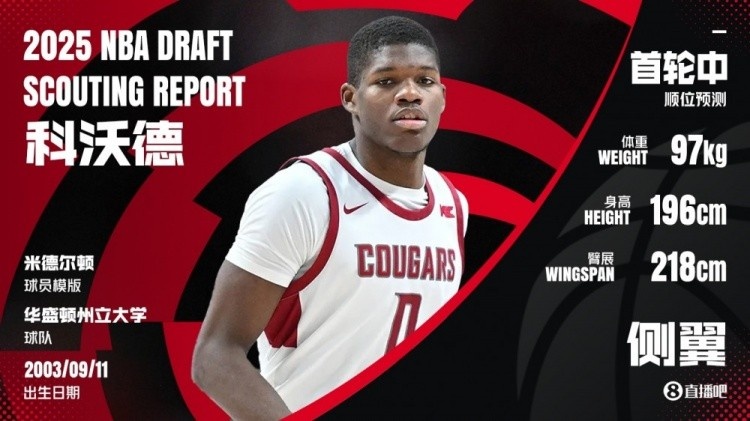
Memphis Grizzlies: C-
First round selection: Sidrick Koward (11th pick)
Second round selection: Javon Small (48th pick), Jama Mashak (59th pick)
The Grizzlies' draft without upward trading is incomplete. This is their fourth upward trading first round signing since 2019. It's worth moving two picks up for Brandon Clark, but it's not the case for Jack Laravia and Zaire Williams.
This year the Grizzlies will move 5 picks from the Magic Unprotected First Round Picks obtained from the Bain trade, and the value of this deal is questionable. This is not a negation of Coward (he ranks 13th in my pure data model), but I will wait until either Coward or Carter Bryant (14th pick) is selected before acting.
Small has a good price-performance ratio. This guard who is not tall but has excellent efficiency has a usage rate of 28% in West Virginia University's senior season; and Mashak (averages only 6 points per game in the senior season of the University of Tennessee)'s active defense is more in line with the Grizzlies in the "hardening and strangling" era.
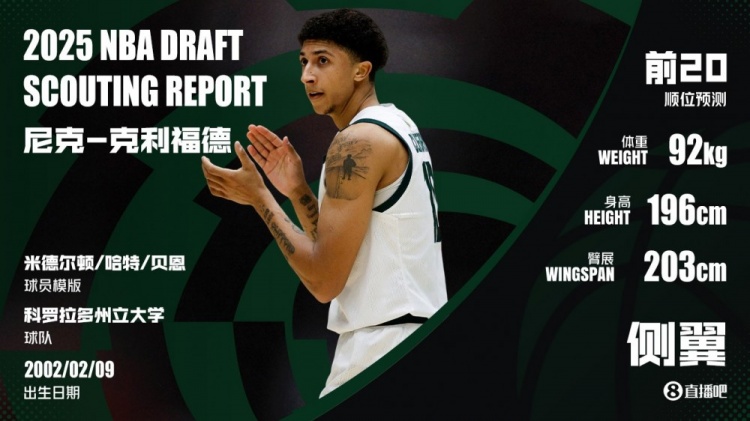
Sacramento Kings: C
First round selection: Nick Clifford (24th pick)
Second round selection: Maxim Renault (42nd pick)
After sending the 13th pick to the Hawks this year to complete the Hulter trade, the Kings used the first round pick obtained from the Fox trade to return to the first round draft. The Kings restricted the trading risks by setting the top 16 picks. My model evaluates Nick Clifford below scouts, the 23-year-old wasn't seen as a potential stock in the NBA until his fifth year in college. Whether this stems from real technological progress or an empirical advantage that cannot be continued remains to be seen.
scouts also have higher evaluations of Maxim Renault than my model, mainly because of his low blocking rate as a center. But last year I made a mistake in Quenten Post, and Renault also hit 67 three-pointers in his senior season to show a similar skill package.
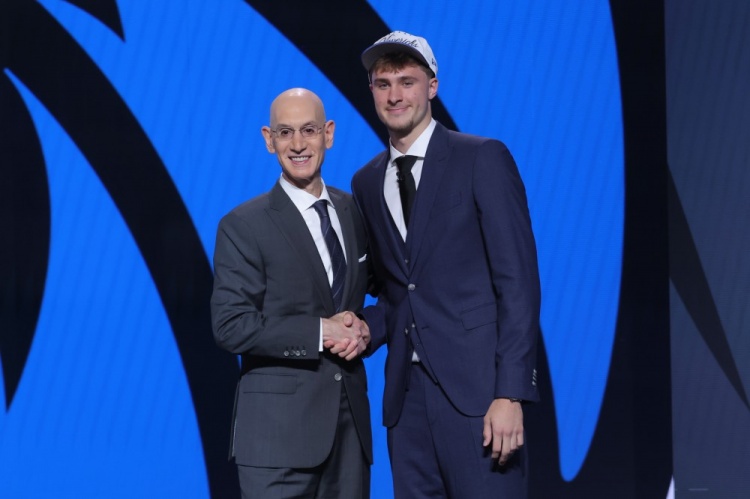
Dallas Mavericks: B
First round choice: Cooper Flag (No. 1)
Do you think the Mavericks management will have much debate about this choice? Since the Mavericks accidentally won the No. 1 pick, Flag has been a sure choice, which is completely reasonable. From the perspective of team building strategy, the Mavericks won't get a high score for winning the No. 1 pick, they just didn't mess up everything.
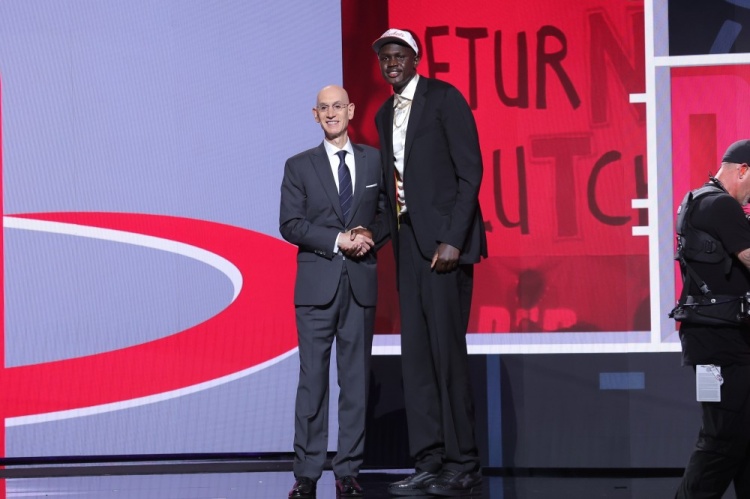
Phoenix Suns: B
First round selection: Carman Maluarch (10th pick)
Second round selection: Rashiel Fleming (31st pick), Kobe Brea (41st pick)
Duke center Maluarch happened to fall into the hands of the Suns who were short of frontcourt, and they also obtained former Duke center Mark Williams through another independent deal. It is interesting to note that the Suns could have followed the subsequent teams to trade downward, but since Maluach was the best candidate at the time, it would be more reasonable to choose the original pick.
The Suns will then use their future draft picks to exchange for the 31st pick and the 41st pick. Teams compete for St. Joseph’s forward Fleming (ranked 12th in my pure data model) to add another high-quality basket protector with range to the Suns. Although Brea is another choice for the Suns' oversized shooting guard position, his historic shooting ability (the highest scorer skill value in my database) will play a role, especially when Grayson Allen is traded.
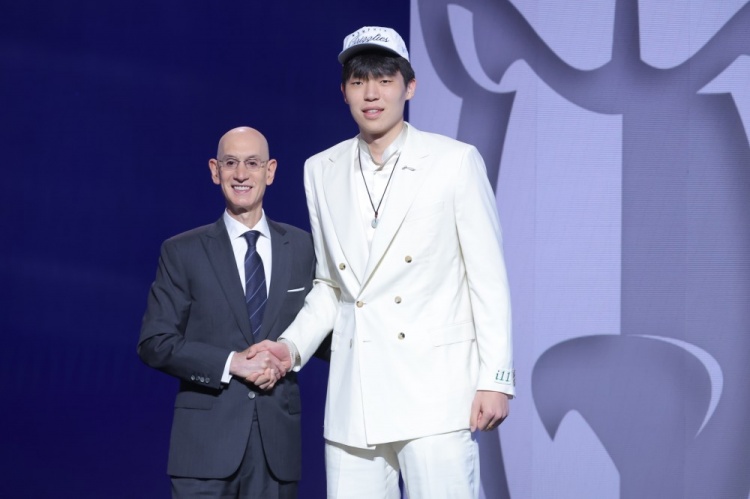
Portland Trail Blazers: C-
First round selection: Yang Hansen (16th pick)
Yang Hansen may become an All-Star, and even lead the Trail Blazers to the championship. But other teams value him significantly lower than the Trail Blazers, which means the Trail Blazers are betting that they can defeat the industry consensus. It is worthy of affirmation that the Trail Blazers get an additional first-round pick through downward trading, but could have achieved greater benefits if the Hawks traded 10 picks downward (if possible).
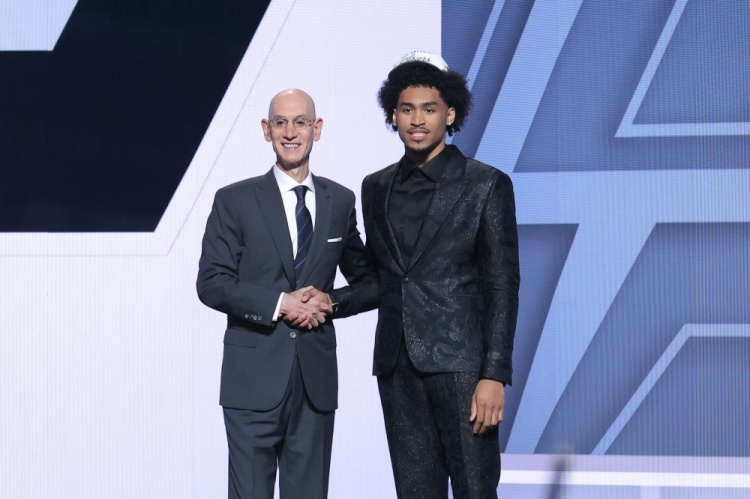
San Antonio Spurs: A
First round choices: Dylan Harper (second place), Carter Bryant (14th pick)
Harper has always been recognized as the second place candidate, so in addition to considering potential blockbuster deals, the Spurs' early draft work has been completed long ago. What is even more commendable is another lottery operation, and the Spurs are patiently waiting for Carter Bryant to fall to the 14th pick. I'm optimistic about his 3D potential, which makes it perfect for teams that already have players like Harper, Fox and Vinban Yama.
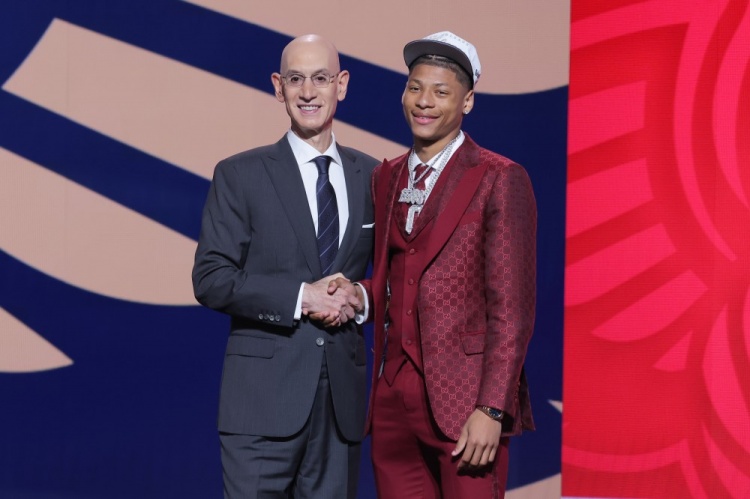
New Orleans Pelicans: F
First round selection: Jeremiah Fells (7th pick), Derek Quinn (13th pick)
Second round selection: Mika Pivi (40th pick)
Pelicans are not without successful precedent in order to get Derek Quinn's upward trade. In 2018, the Suns paid an unprotected first-round pick and moved up 6 picks to select Mikale Bridges for the money. But the Pelicans' evaluation logic of gamblers (which determines that Quinn is worth less than Fells but is still worth trading upward) is extremely risky, especially when the Pelicans' own first-round pick in 2026 may become a bargaining chip. You should know that Mikal Bridges ranked sixth in my prediction model that year, while Quinn did not enter the top thirty. The Pelicans' choice of the recognized best candidate at the 7th pick, Fells is worthy of recognition, but in hindsight, it would be wiser to choose Quinn with that draw than to choose these two rookies at the same time with the upward trade.
Micha Pivie's big five season at Georgetown University (averages 17.2 points and 2.3 steals per game), and his three-point shooting percentage jumped to 40% to make him expected to be a 3D player, but his free throw shooting percentage (66%) did not improve simultaneously.
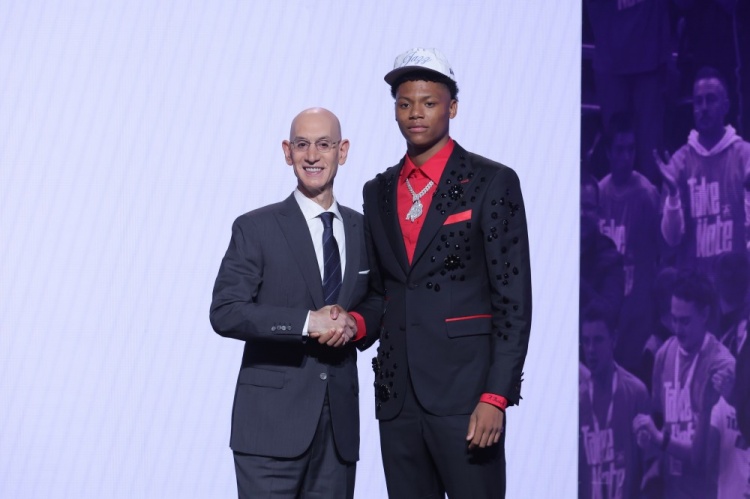
Utah Jazz: B+
First round selection: Es Bailey (5th pick), Walter Clayton Jr. (18th pick)
Second round selection: John Tongjie (53rd pick)
I have compared the growth trajectory of Bailey with the Celtics Jaylen Brown and Tatum. If you join the championship team, you need to make a breakthrough in shooting. This analogy is even more subtle after the Jaylen Brown and Tatum selected Angie (Danny and Austin) brought Bailey to the Jazz who was still in reconstruction. Bailey ranks fifth in my data model, with reasonable value choices and no need to worry about his unwillingness to join. But the Jazz needs to carefully plan their cultivation paths in order to shape Bailey into a wing ace like a Celtic double star. Clayton, the sharpshooter who selected the NCAA champions team, helped the process, and while the Jazz were crowded in the backcourt, veterans Clarkson and Sexton might not stay for long.
24-year-old Tongjie is the oldest rookie of this class. The University of Wisconsin senior six averages to score nearly 7 free throws per game (91% free throw shooting percentage), and his 38% three-point shooting percentage should be better translated to the NBA.
Eastern Conference

Cleveland Cavaliers: B
Second round selection: Teres Proctor (49th pick), Saliu Nian (58th pick)
Cavaliers did not get the draft pick until the day after the draft, but successfully picked up the Proctor worthy of attention. The once high-profile player "successful in college" continued to improve, shooting 40.5% from three-pointers this season and showing potential for ball-holding defense (although steal rate needs to be improved). Salio Nian's prospects as a reserve player are even more unclear, with his career 26% three-point shooting percentage and 71% free throw shooting percentage being the main shortcomings.
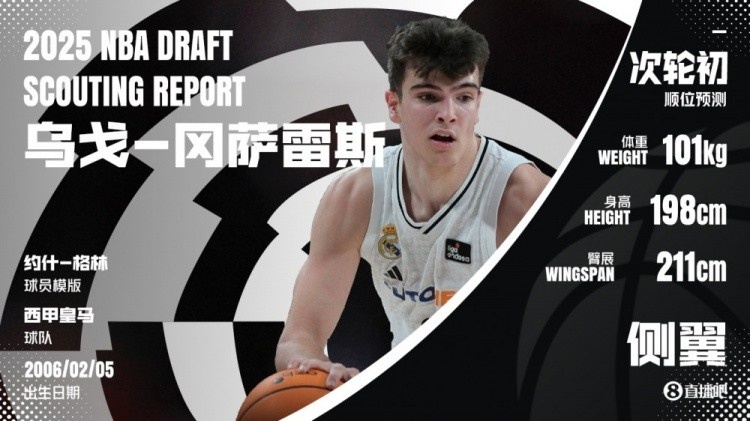
Boston Celtics: C+
First round selection: Ugo Gonzalez (28th pick)
Second round selection: Amari Williams (46th pick), Max Schulga (57th pick)
Gonzalez himself is more suitable to continue to train in Europe as a reserve rookie, but Celtics president Stevens made it clear that the team plans to bring him to the NBA next season. The draft broadcaster compared Gonzalez with Nuggets wing Braun, but the key difference is: Braun hit 38% from three-pointers in college, while Gonzalez only hit 27% from three-pointers during his time at Real Madrid.
Amari Williams has shown multiple potential as a rebounder, basket protector and elbow supporter, but his career two-point shooting percentage is only 54%, which is significantly lower for centers who lack space attributes. The Celtics' last selected Max Shulga scored the highest in my prediction model with a 39% career three-point shooting percentage.
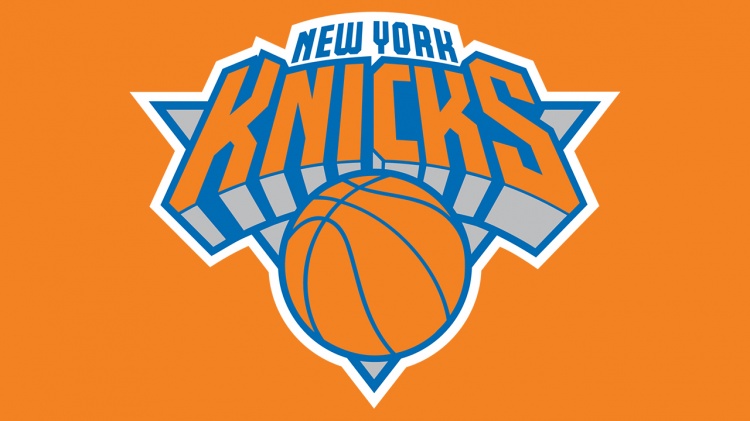
New York Knicks: C+
Second round selection: Mohamed Diavala (51st pick)
Diavala has not yet become an influential player in the French local league (averages only 5.8 points per game in Cholai this season), leaving him overseas to train is more reasonable than occupying the lineup.
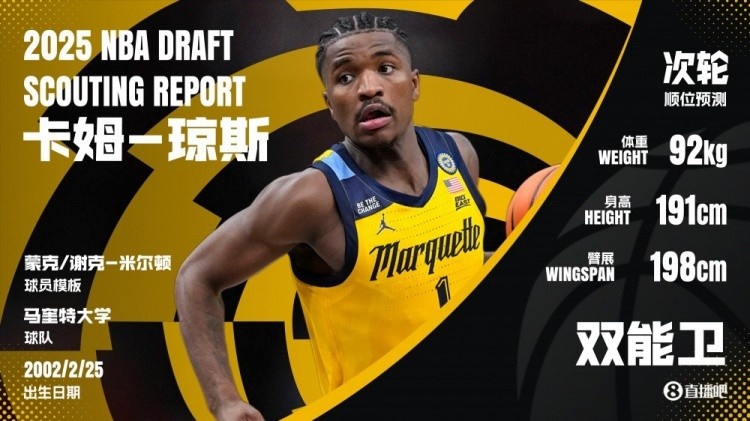
Indiana Pacers: A
Second round selection: Cam Jones (38th pick), Tyron Pete (54th pick)
Pacers selected the second round pick I admire most for two consecutive years. Unlike last year's 20-year-old rookie Johnny Ferfey (with limited rookie season appearances), 23-year-old Cam Jones is more likely to plug and play. During the absence of the G7 after suffering a ruptured Achilles tendon in the Halliburton Finals, the Pacers urgently needed a defender to strengthen.
Tyron Pete is a potential stock worth taking risks. This guard who played for the NCAA Division II Arkansas Tech defender, who averaged only 1 assist in his junior five seasons after transferring to Free University. But when you have a 76% two-point shooting percentage and a 45% three-point shooting percentage, why do you still have to pass the ball? Although it is not sure whether this shooting efficiency can be converted to the NBA, there is no risk in choosing him at the 54th pick.

Milwaukee Bucks: B
Second round selection: Bogoryub Markovic (47th pick)
No player selected by the Bucks at the 47th pick can change Antetokounmpo's future. Markovic showed efficient scoring ability in his first full season in the Adriatic League (61% from two points and 37% from three points), but his sluggish steals and blocking rate sparked defensive doubts.
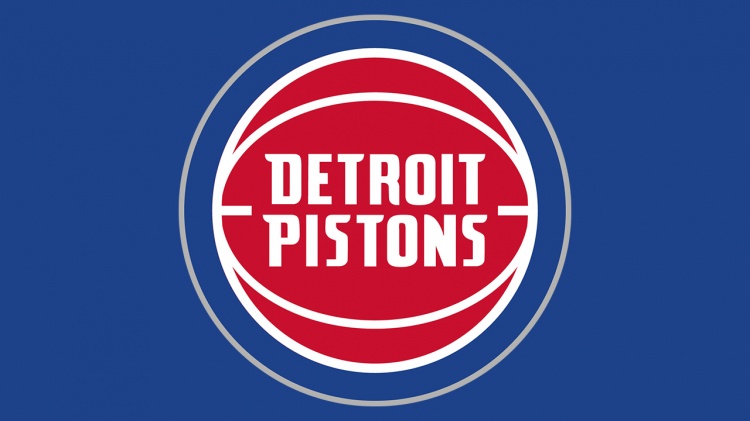
Detroit Pistons: B
Second round selection: Chaz Lanier (37th pick)
Similar to another late-achieving star at the University of Tennessee, Chaz Lanier also achieved explosive growth. From averaging 4.7 points per game at the University of North Florida in 2022-23 to averaging 18 points per game in the SEC League this season. The elite shooter with a size advantage (40% career three-point shooting percentage) provides insurance plans for the Pistons to be unable to renew Malik Beasley and Tim Hardaway Jr.
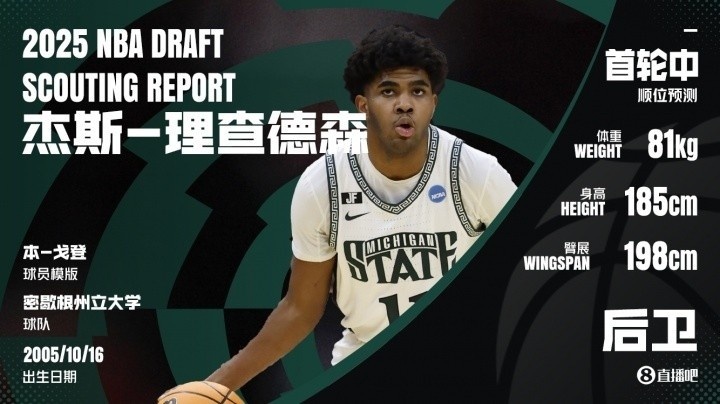
Orlando Magic: B+
First round selection: Jace Richardson (25th pick)
Second round selection: Noah Ponda (32nd pick)
Jace Richardson joins one of the four NBA teams his father Jason Richardson once played for is full of drama, and his own value is also worthy of recognition. The Michigan State guard's naked foot height was only 1.85 meters in the draft physical test and plummeted (original prediction lottery area), and this violent fluctuation always puzzled me.
Magic do not urgently need Richardson's contribution to combat power, but he is expected to grow into a rotation player when the team's impact of sending four first-round picks to get Bain. Then the Magic paid the expensive price of the No. 46 draw, No. 57 draw and two future second round picks to choose Ponda. The French striker's shooting ability is still evolving (the free throw percentage is less than 70% this season).
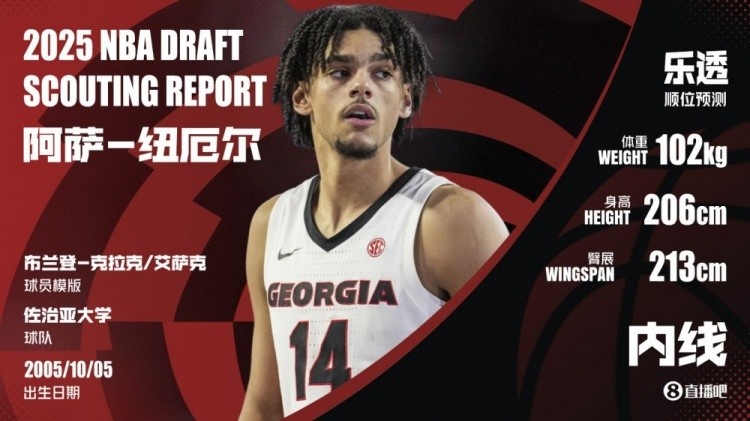
Atlanta Hawks: A
First round selection: Asa Newell (23rd pick)
The Hawks won a 2026 unprotected first-round pick (the Bucks and the Pelicans have a higher pick). At this time, it almost doesn't matter which player the Hawks choose. Even if I didn't get the No. 23 sign this year, the deal itself is cost-effective. What's even better is that the Hawks selected the 13th newcomer in my prediction model..
Whether Newell can quickly enter the rotation lineup and partner with Hawks new aid Porzingis, remains to be seen, but the adaptability of the two is expected: Porzingis's advantages can just make up for Newell's technical shortcomings in serving as a striker or center.
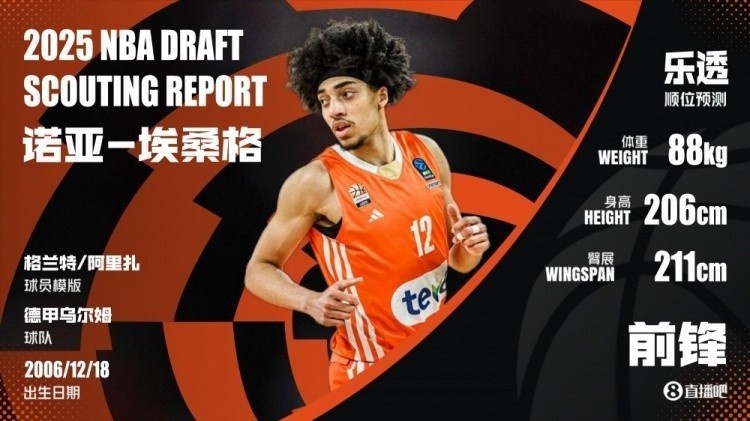
Chicago Bulls: A-
First round selection: Noah Essanger (12th pick)
Second round selection: Lachland Albridge (55th pick)
Essanger's adaptability to last year's lottery pick Boozelis (another young forward swinger) is expected. If the two can develop qualified outside projections to achieve forward coexistence, or if Buzzellis occasionally plays a guest center after gaining weight, they will give the Bulls a combination of specific type and athletic ability. Although the management refuses to completely play a bad job and strive for a higher pick, the Bulls still insist on selecting potential rookies and implementing the strategy of selecting the best players, which is worthy of recognition.
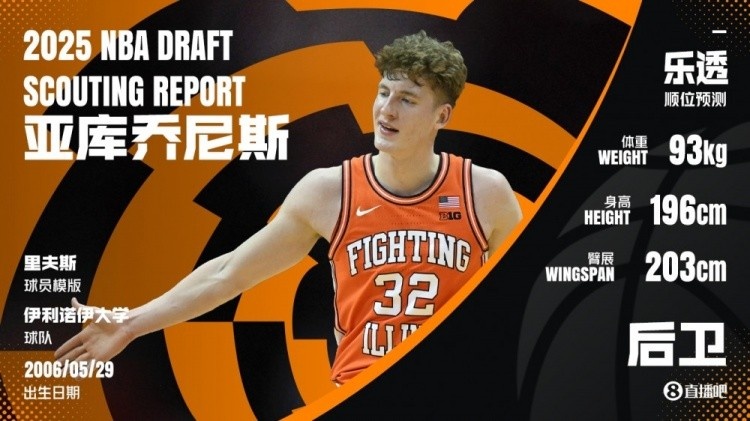
Miami Heat: A-
First round choice: Casparas Yakujonis (20th pick)
Akujonis is not a perfect potential stock, with abnormally low steals and blocking rates, and his turnover control in his only season at Illinois is also poor. But the Heat still chose this popular candidate who had been in the top ten for a long time with a great value signing position, which is one of the best choices for draft nights.
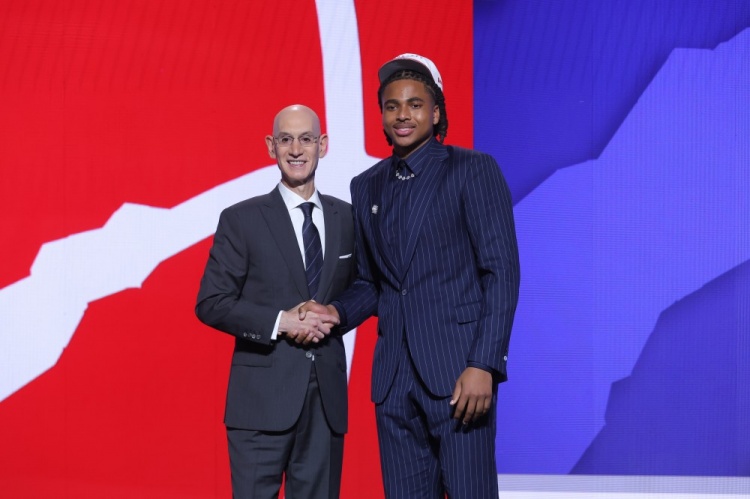
Toronto Raptors: B
First round selection: Colin Murray Boyles (9th pick)
Second round selection: Ariga Martin (39th pick)
I firmly believe that Boyles' non-traditional game style can adapt to the NBA, although the Raptors are not their ideal site. If this power forward wants to succeed, he needs external fire support, and the Raptors' existing center Pertel lacks shooting, so his outside accuracy is only qualified.
If last year's second round pick Jonathan Mogbo (24% of the three-point shooting percentage in the rookie season) can develop long shots, these two short insides may form an interesting frontcourt combination with outstanding defensive influence.
Ariga Martin, who is 1.88 meters tall, is short in the shooting guard position, but he performed well in college and ranked 26th in my pure data model.
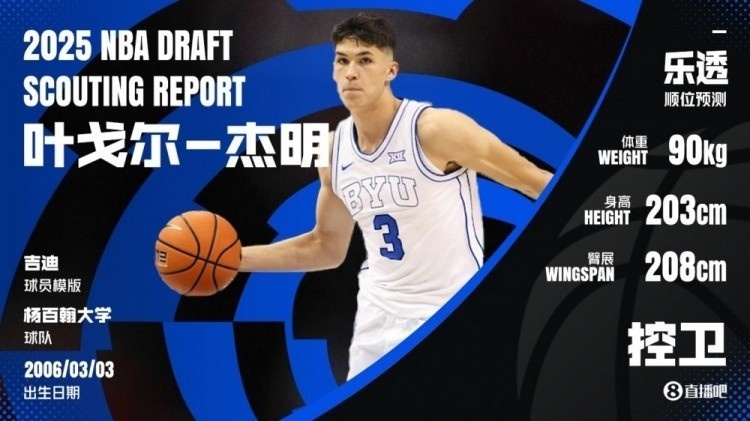
Brooklyn Nets: C+
First round choices: Yegor Jamin (8th pick), Norran Traore (19th pick), Drake Powell (22nd pick), Ben Salav (26th pick), Daniel Wolf (27th pick)
From the perspective of team building strategy, the fact that the Nets have record-breaking five first-round picks is more important than the specific selection, which is also one of the reasons why I give high scores to their deals to obtain these draft picks.
The Nets are betting on developing an astonishing number of young players, with many of them having technical overlaps. Jamin and Traore are both organizers with body strength, but their projection ability and scoring efficiency still need to be polished. They can coexist on the defensive end, but such a roster combination may face space issues. Choosing so many unfinished players should help the Nets make another move to the lottery zone in 2026 (the first round of the Rockets in 2027).
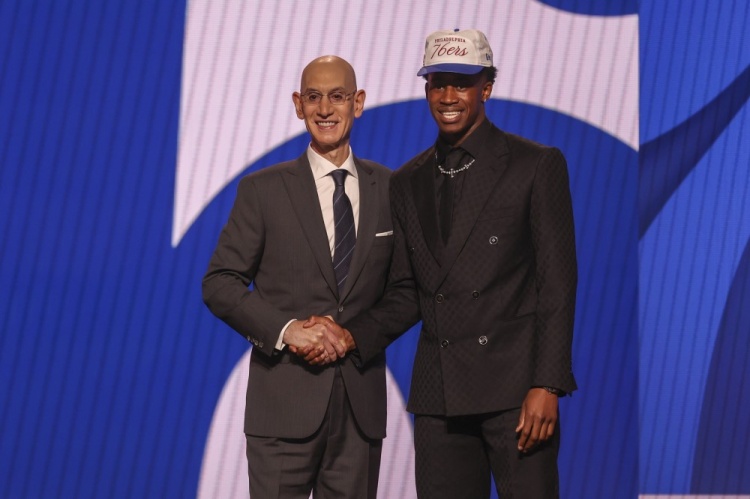
Philadelphia 76ers: B+
First round selection: VJ-Edgecomb (Tanhua)
Second round selection: Joni Bloom (35th pick)
Although Kniper has a slight advantage in my prediction model, I would have chosen Edgecomb. His top steal rate and athletic talent at Baylor University can lay the foundation for developing independent offensive capabilities. Although Kniper is better with Embiid, given Embiid's health, this may not be the top consideration for the 76ers.
Center Bloom, who was selected for the All-American first team this season, can provide immediate combat power, and his skills are more comprehensive than existing substitute centers (Dramond and Bona) who are struggling.
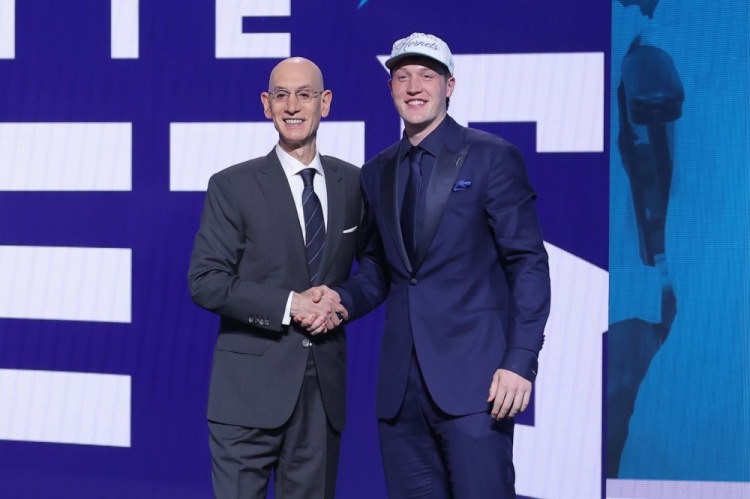
Charlotte Hornets: B
First round selection: Con Knippel (4th pick), Liam McNeley (29th pick)
Second round selection: Sain James (33rd pick), Ryan Calke Brenner (34th pick)
Although the Hornets prefer to choose Duke players is worth teasing, Knippel ranks second in my prediction model and can perfectly fill the team's shooting guard vacancy. Although Trey Johnson is also suitable, Knippel showed more efficient scoring skills at Duke, and my data model also gave it a higher rating when he was in the more important ball-holding role in the Nike EYBL League.
Choose McNeley with a similar style, which is a bargain. The rookie, who was originally expected to be around 20, unexpectedly fell to the 29th pick. But it is worth discussing that the Hornets chooses another Duke player, Sain James, in the early stages of the second round. The point guard who has always played a role player in his five-year NCAA career has never exceeded 17.1%. After trading starting center Mark Williams, if Carlke Brenner's pick-and-roll defense can quickly adapt to the NBA intensity, he may get a rotation opportunity immediately.
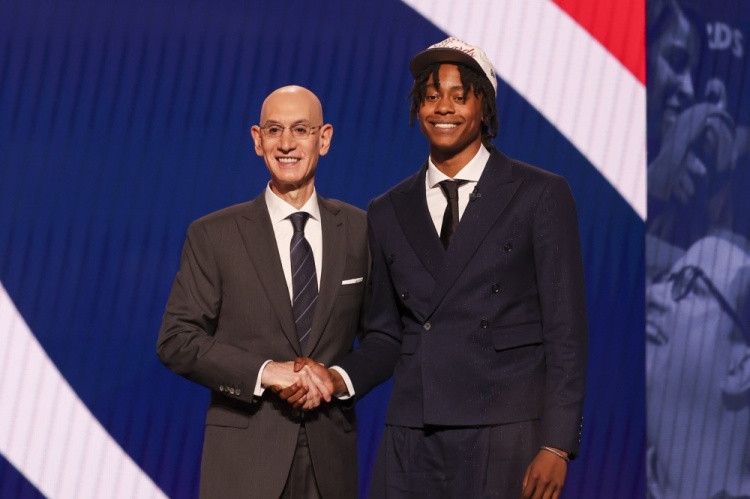
Washington Wizards: B-
First round selection: Trae Johnson (6th pick), Will Riley (21st pick)
Second round selection: Jamill Watkins (43rd pick)
Similar to the Nets, the Wizards bet on younger. After winning four young players in the first round in 2024 (including AJ Johnson, who won the trade deadline), two more will be added this year. I'm skeptical of Trae Johnson's top five picks because of his poor defensive statistics and a low two-point shooting percentage. But outside this ranking, his shooting potential is still worth this signing position. Will Riley's pick is slightly higher than I expected, and he also needs to improve his defensive organizational skills. Watkins, who will turn 24 in July, can bring more immediate combat experience, and his defensive potential is unquestionable, but it needs to improve his career 32.5% three-point shooting percentage.
Original text: Kevin Pelton
Compiled by: Li Taibai
24h bóng đáRelated Posts
- Shams: Bucks have waived 2023 late pick Chris Livingston
- Gillespie: Our new lineup is young and full of energy. We need to regain our winning habits and build a culture.
- 🎤The new NBA season starts next Wednesday. Why has no team signed Westbrook yet?
- Naturalized player & Qian Chal missed the European Championship! 077 Father questioned: Don’t understand the meaning of cooperation
- Marketing capability Max! Agent is interviewed by video Kumingga trains behind him
- Chalmos: The Warriors shouldn t trade Butler for Durant I think the latter will go to the Rockets
- Beverly: The people in Oxford still hate me. They said that if I weren t for my Thunder, I d already won 2-3 championships.
- 🚨 Two season reimbursements in two years! The Heat signed Drew Smith with three-year contract worth 7.9 million
- The Heat will challenge the Lakers away from home tomorrow. Powell is doubtful due to right groin soreness.
